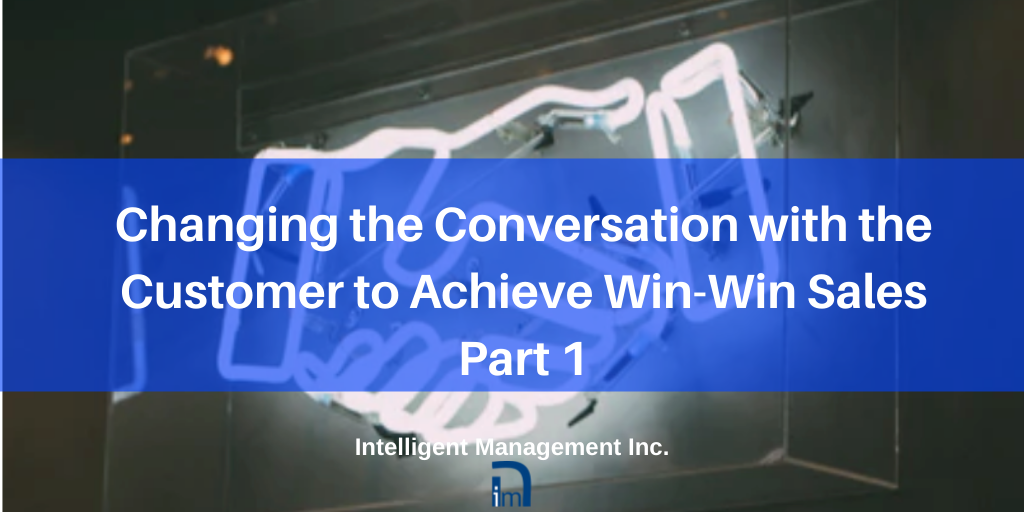
Nothing sells itself, not even the best of products or solutions. In today’s global marketplace it is critical to be able to sell successfully. Many are struggling. They may even have a sensational product or service that’s exactly what customers need and yet they still can’t sell enough of it. Why?
Buying is a process of change
Because they have not understood that buying is a process of change. The good news is that when it comes to selling something that is complex, that has real value and is a benefit for the customer, it’s not so much about talent or ‘the gift of the gab’. There is a precise path that leads to making a sale.
It’s a path that can be learned. When we sell a product/solution to a customer and we want them to adopt that solution/service into their reality, we’re actually asking them to go through a change process. Guess what? Nobody likes change if they can avoid it. They will resist. Unless, of course, we have a way to understand how to guide them through that resistance. This is the pathway that takes the customer towards being willing to buy.
There are six levels of resistance to change that have been identified by Dr. Eli Goldratt as part of the Theory of Constraints:
- Disagreement about the problem
- Disagreement about the direction of the solution
- Lack of faith in the completeness of the solution
- Fear of negative consequences generated by the solution
- Too many obstacles along the path that leads to the change
- Reservations about our ability/willingness to implement the solution (and about the ability/willingness of others)
These levels are progressively easier to tackle and the path to a successful sale accompanies the customer in a structured way through these levels one by one. There are precise Thinking Processes that address each of these levels. Learning to sell means learning to use these tools and adapt them as part of any sales process to craft an ‘unrefusable offer’.
Caveat vendor: new mindset required for win-win sales
The one requirement that allows people to learn and adopt this approach to sales successfully is to understand that it requires a shift in mindset. The Theory of Constraints is based on the premise that it is always possible to find a solution that is win-win and that both we and the customer are part of something that’s much bigger than us.
The Theory of Constraints is a systemic approach and as such it recognizes we are all part of a chain of value and in that chain there are interdependencies that need to be recognized. The idea that I can win and you can lose is seen as a fallacy if we want to create any kind of long-term, sustainable prosperity. There is no room for greed in this approach. It’s about working together with the customer to build the trust and credibility that form the basis of a satisfying relationship and to help them understand the real value of what we are proposing. That way their decision can never be based on price-tag alone.
In our next post, Part 2, we will take a closer look at how to shift the relationship with a customer to achieve win-win sales. In the meantime, we provide detailed information about achieving win-win sales using a systemic approach from the Theory of Constraints in our groundbreaking book ‘Sechel: Logic, Language and Tools to Manage Any Organization as a Network’. We are offering a free PDF of ‘Sechel’ to everyone who buys our digital business novel ‘The Human Constraint’ until September 30th exclusively at www.thehumanconstraint.ca
Intelligent Management has been guiding organizations to understand a systemic approach to manage complexity, radically improve performance and growth for over 20 years through our Decalogue management methodology. The Network of Projects organization design we developed is supported by our Ess3ntial software for multi-project finite scheduling based on the Critical Chain algorithm.
See our latest books Moving the Chains: An Operational Solution for Embracing Complexity in the Digital Age by our Founder Dr. Domenico Lepore, The Human Constraint – a digital business novel that has sold in 41 countries so far by Dr. Angela Montgomery and ‘Quality, Involvement, Flow: The Systemic Organization’ from CRC Press, New York by Dr. Domenico Lepore, Dr. .Angela Montgomery and Dr. Giovanni Siepe.





Leave a Reply